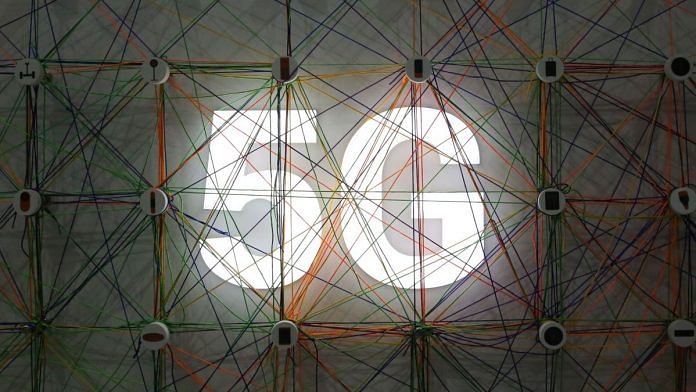The need for digital connectivity has never been more critical than during the coronavirus pandemic. Due to extreme social norms to prevent the spread of the virus, there has been a sudden shift to the digital world to minimise the disruption to economic, educational and social activities. This has also exposed the digital divide in India — a large part of the country is still digitally disconnected and is not able to move to digital distribution channels. With the forthcoming transformation of the digital world with 5G, it becomes all the more pertinent to ask what the course of digital divide in India will be. Will it exacerbate the already dreadful state or bridge the gap?
Lack of internet connection, technological devices and skills to use new technology in a meaningful way gives rise to the digital divide. In a country of 1.3 billion, India’s mobile user base is phenomenal at approximately 1.1 billion; however, only 664 million are internet users. The remaining are still trapped in the 2G universe with their feature phones. Moreover, out of the total internet user base, only 200 million are from rural India.
The problem of coverage
The first challenge in India is the coverage. The 4G spectrum auction in 2016 saw large blocks of unsold spectrum. This is attributed to the lack of buyer interest due to high reserved price, particularly the 700 MHz band, which travels much longer distances, requires fewer towers as compared to the higher frequency bands, and is crucial to bridge the digital divide. In addition, its coverage is 140.37 km², much higher than the coverage of 0.95 km². in dense urban areas. Therefore, in India, with 66 per cent rural population, 700 MHz spectrum is imperative. The Narendra Modi government has announced the sale of 700 MHz spectrum in the next 4G auction, and 5G at a later stage after the network ecosystem is developed. However, when this would fructify is uncertain. With the telecom sector getting increasingly financially stressed, it is to be seen whether there would be many bidders for 5G spectrum going forward.
For successful auctions, the reserve price will play a critical role. A higher reserve price may again lead to a lack of buyer interest. Furthermore, higher spectrum prices would result in higher consumer tariff making the services unaffordable for majority of the population in India. In order to meet the goal of bridging the digital divide, the objective of spectrum auction needs to shift from revenue maximisation to efficient allocation for wider and cost-effective coverage. For instance, a usage payment system, in which the operators do not ‘buy’ spectrum but pay for usage of the spectrum would not only be a more efficient and less time-consuming method of allocation but would also create greater competition among the players and make entry and exit from the sector seamless.
Also read: Jio developing homegrown 5G solution, says Mukhesh Ambani
5G devices
Another big challenge is affordable 5G-compliant devices. Reliance Jio has recently announced that it is working along with Google to launch an Android-based operating business. Looking at the pace of innovation and competition in the mobile devices industry, it doesn’t seem implausible to have affordable 5G-compliant mobile devices for the masses by the time network coverage reaches rural India. However, given the scale of transformation, a few years of delay in rural coverage for 5G may exacerbate the digital divide, which may take a long time to bridge.
With high capacity and ultra-low latency of 5G, there are a plethora of artificial intelligence (AI) and Internet of Things (IoT) applications and use cases that have the potential to transform the way we see the world today. Immersive gaming and virtual reality will also get a big boost. There would also be a paradigm shift in teaching pedagogies with distant learning being integrated with classroom teaching to improve the quality of education exponentially. Furthermore, the sophistication of the processes that 5G will bring would create new opportunities in skill training.
Also read: Modi govt set to keep China’s Huawei, ZTE out of 5G trials in more pushback after Ladakh
Distant digital inclusion
The highly concentrated and financially distressed sector may not yet be ready for the digital inclusion that India is aiming for. The Modi government has recently taken some relief measures for the ailing sector like the extension of the payment tenure for auctioned airwaves from 10 to 16 years and easing of spectrum holding caps, but only for bands above 1 GHz. However, these measures are of no avail when it comes to digital inclusion. In order to prevent the digital divide from widening, the government may need to step in through public-private partnership (PPP) models. One example of a successful PPP model for network infrastructure is BharatNet, a digital connectivity initiative. Originally launched under the Manmohan Singh-led UPA-II government in 2011 and given a major fillip by the Modi government, it was to connect all 2.5 lakh gram panchayats by end of 2018. However, the work is still in progress.
Considering that even 4G hasn’t reached the majority of people in India, 5G seems a distant dream for the vast majority living in rural or under-serviced areas. So, whereas those living in the urban areas would be able to benefit from the 5G rollout and the opportunities it would create both in terms of new businesses and jobs, a vast number would be left far behind. Unless focussed policy interventions reduce the time taken to scale up the 5G footprint, digital divide will widen further.
Dr Arvind Mayaram is former Union finance secretary and chairman, CUTS Institute for Regulation & Competition. Garima Sodhi is Senior Fellow, CUTS Institute for Regulation & Competition. Views are personal.






